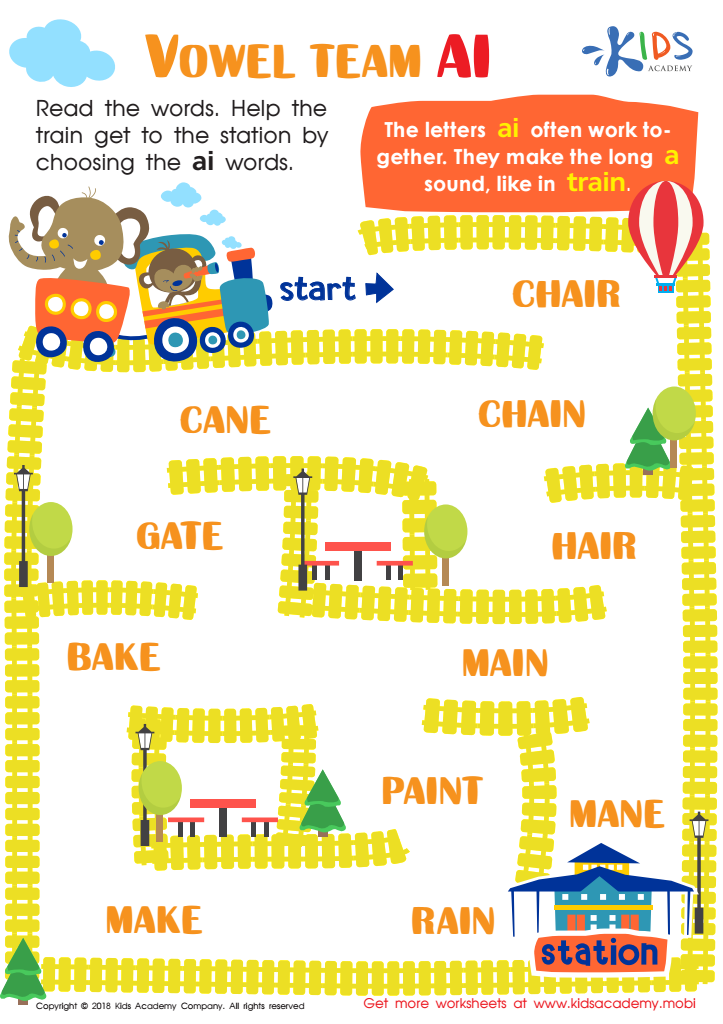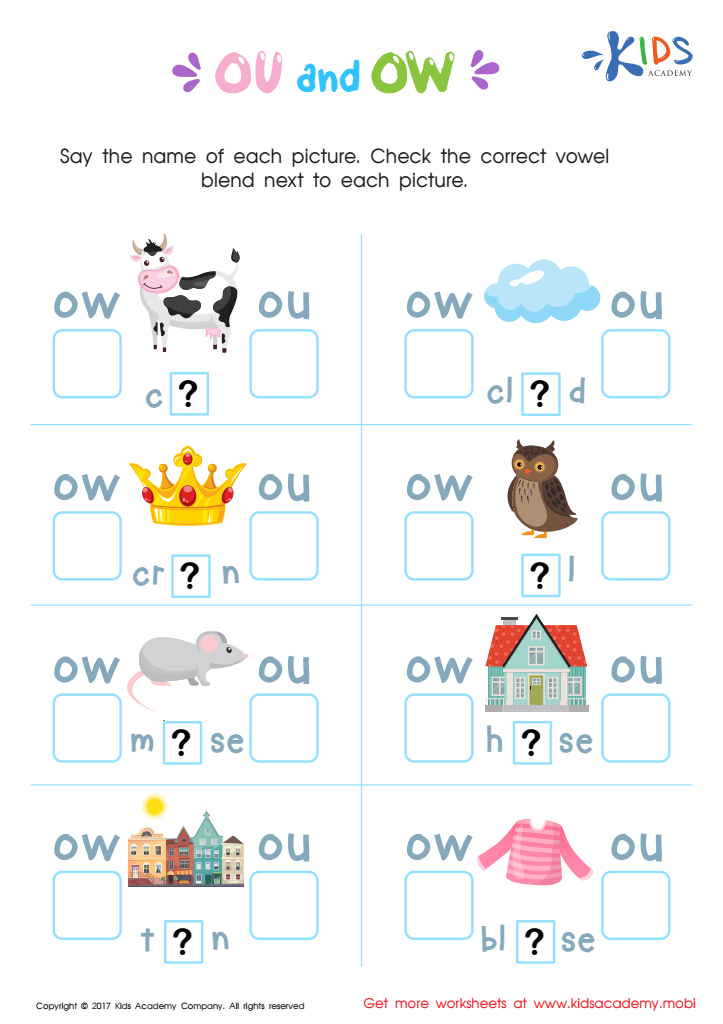Vocabulary expansion Normal Two Letter Phonics Worksheets for Ages 4-9
6 filtered results
-
From - To
Enhance your child's vocabulary and phonics skills with our "Normal Two Letter Phonics Worksheets" designed for ages 4-9. These engaging and interactive worksheets focus on two-letter word formation, helping young learners develop essential reading and writing abilities. Through fun activities, children will expand their vocabulary, recognize phonetic patterns, and improve language comprehension. Ideal for home or classroom use, these worksheets offer a playful approach to learning that ignites curiosity and promotes literacy. With colorful illustrations and structured exercises, each worksheet turns phonics practice into an enjoyable experience. Help your child build a strong foundation in language with our expertly crafted resources!


Blending Consonants: "Fl", "Bl" and "Gl" Printable


Vowel team ai Worksheet


Two Sounds for OO Worksheet


Medals: Al Spelling Worksheet


Missing Digraph: Part 2 Worksheet


OU and OW Words Worksheet
Vocabulary expansion through normal two-letter phonics is crucial for children aged 4-9 as it lays the foundation for effective reading and communication skills. At this developmental stage, children are like sponges, absorbing language and sounds around them. Understanding and recognizing two-letter phonics helps young learners decode words more easily, enabling them to read early texts with confidence and accuracy.
By focusing on two-letter phonics, parents and teachers can enhance children's phonemic awareness, which is the skill of recognizing the sounds that make up words. This skill directly influences a child's ability to expand their vocabulary. As children become proficient in sounding out two-letter combinations, they can tackle a wider array of vocabulary in everyday language use and in their reading materials.
Additionally, a strong vocabulary supports children's cognitive development, critical thinking, and overall academic performance. It also prepares them for more complex language structures as they progress in their education. Engaging in vocabulary-building activities not only promotes literacy but also fosters a love for reading, enriching children’s imaginations and broadening their understanding of the world around them. Ultimately, investing in vocabulary expansion through phonics can lead to better communication, academic success, and lifelong learning.
 Assign to My Students
Assign to My Students















